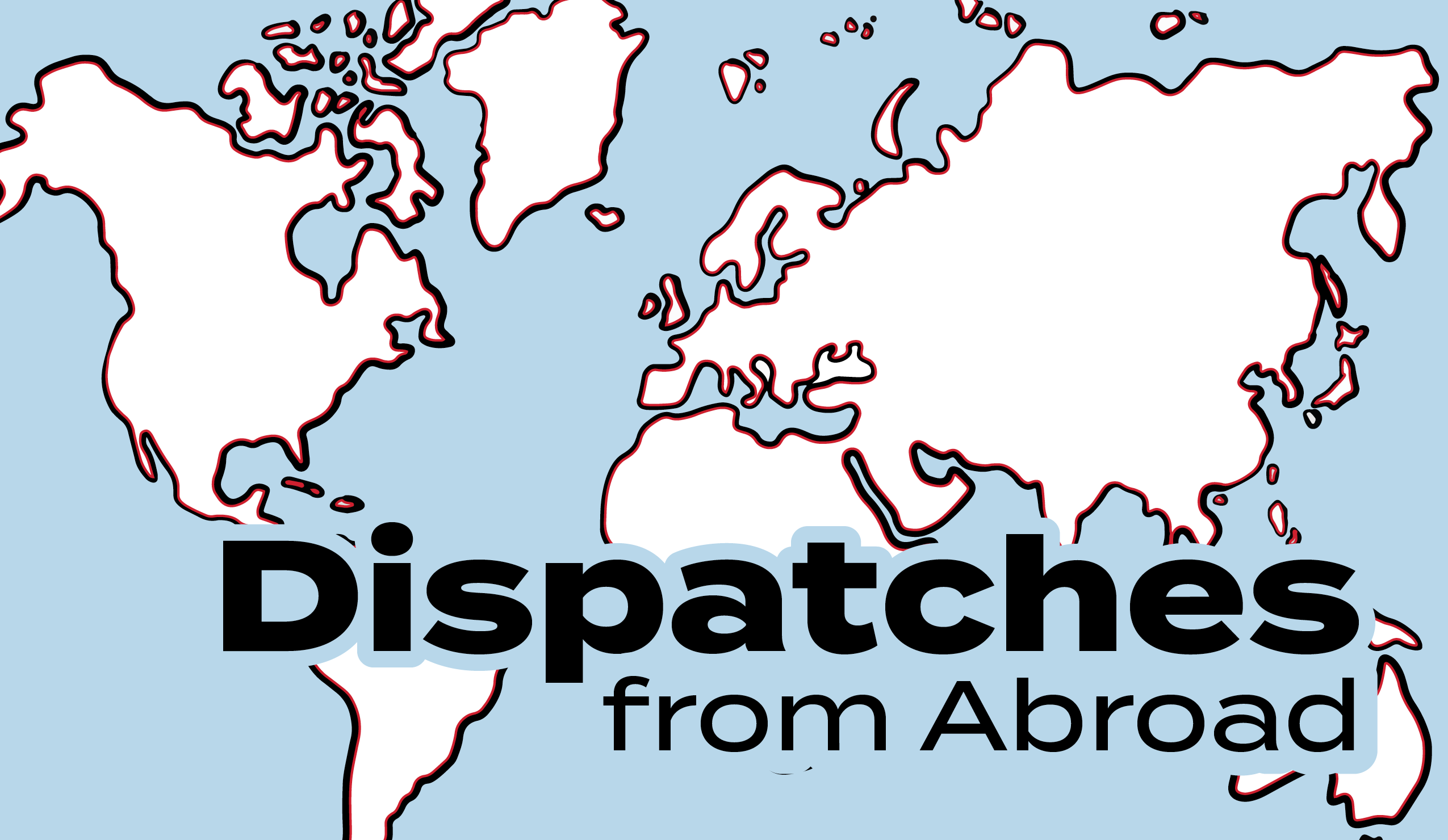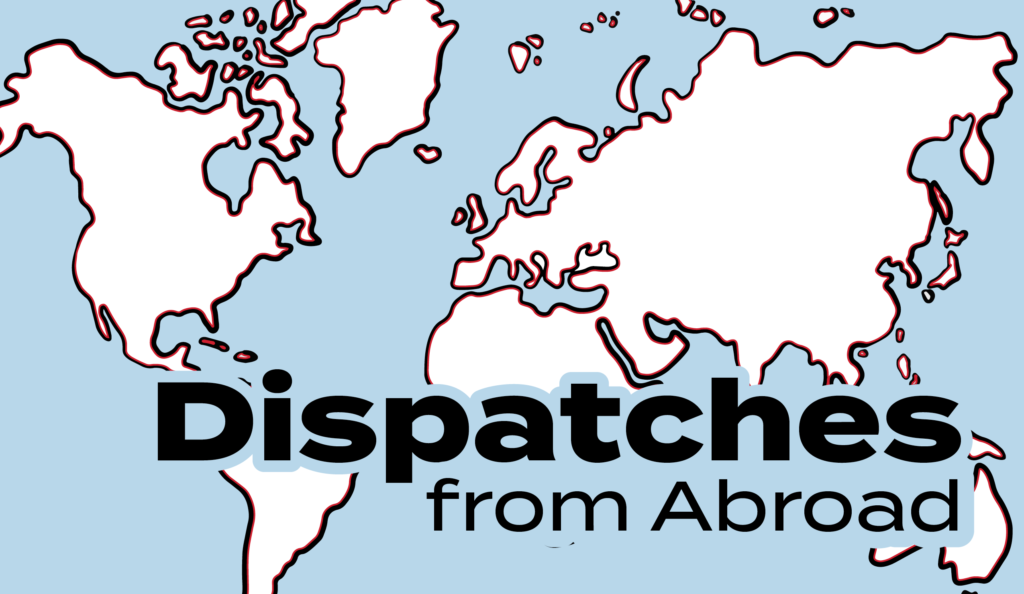Featured
Barcelona: The Bittersweet Layers of Traveling Abroad

A group of students from the School of Journalism and New Media at the University of Mississippi recently traveled to Spain for an immersive learning experience that provided rich exposure to Spanish culture and cuisine, while affording myriad opportunities to capture their experiences in written and visual formats.
The majority of the trip was centered in Barcelona, with excursions to other locales during the four-week trip. Leading the program were professors Jason Cain, Chris Sparks, Mark Dolan, and R.J. Morgan – all of whom taught courses in integrated marketing communications and journalism while the group was overseas.
The students enjoyed many cultural experiences, but they also put in a lot of academic work, too, writing in-depth features, gathering documentary photos, exploring international brands and exploring relevant topics in media studies.
In a place as beautiful and complex as Spain, each day brought new experiences and amazing photo opportunities. Shared here are some of the images and travel essays the students captured on their journey. We hope you enjoy it.

By Madalyn Dudley
IMC student
As I waited to board my plane to Atlanta, I couldn’t help but notice the collective angst in the large waiting area around me.
In my brief time sitting at my gate, I heard a man angrily argue with a stewardess, loud enough for each passenger to understand each syllable he so clearly articulated.
He eventually found his way back to his seat just in time for another man, this one sitting immediately to my right, to begin berating a loved one on his phone because they’d forgotten he was traveling to Atlanta that day.
Despite all this shouting and name calling, not a single person looked up from their phone to acknowledge the uproar. How have we become so accustomed to a life filled with anger that no one even notices when someone finally explodes?
I thought to myself, “Thank goodness I am leaving.”
I’ve always wanted to study abroad and my dreams are finally becoming reality. It’s an incredibly surreal experience to realize that the person you are right now is the person you dreamt about becoming when you were younger.
I’d only signed up for this four-week study program a few weeks ago, and now I was staring out my tiny little airplane window, on my way to Barcelona with 40 other over-eager students from the University of Mississippi.
Going to school in Mississippi is unique in the fact that our campus is a melting pot of personalities, and some of the most diverse were sitting next to me on the plane. Each of us seemed to have something we were struggling with, and each of us seemed to be hoping Spain would mend those wounds.
Personally, America had broken me.
My time before the trip had been consumed in American hustle culture, focusing too much on perfection, and my body just couldn’t keep it up much longer. I wanted to escape the United States and the idea that hatred and self-success takes precedence over any experience you may get to enjoy. My heart was distraught, looking for any way out of the hell-cycle my society had created.
Everyone always says when you’re in Europe you realize the value of time. The time that you spend with yourself, with others and with your feelings. Some even describe Europeans as “happy all the time.” I knew this wasn’t fully the case, but it comforted me to know that I would soon be surrounded by people who appreciated the joys of life.
When our plane touched down in Barcelona and finally jolt to a stop, I felt my shoulders automatically lower. The stress of travel had ceased, opportunities were endless and morale was high.
As I drag my suitcase across the cobblestone streets of Barcelona, I want so badly for the negativity that’s been weighing me down to melt away. I need to experience the joys and leisurely lifestyle of Europe.
This trip is going to be my reset.
II.
Behind the glimmering red LED light across the street, I can hear the mystical tones of Rihanna.
Intrigued, I weave my way between the bar stools to the back room and discover a small dance floor positioned in the center of the tiniest room I’ve ever seen. I began dancing alongside a man named Pedro, a middle-aged man with spiked hair similar to a middle schooler’s that laid perfectly over his movie star face.
He was electric.
His smile was warm and welcoming and even though I did not understand a word of the song, he complimented my dancing by moving with me to the beat. After the song ended, he leaned to me and asked me where I was from.
I always dread this question.
The look on people’s faces when they realize your American is like someone pitying you at a funeral, they bat their eyes and feel bad for you and your situation.
Instead of this reaction, he kept that same welcoming smile and said, “We are from Punta Cana!”
I smiled. I knew that place. Punta Cana was built by American businessmen just fifty years ago. They were looking to create a cheap vacation haven for anyone looking to travel to the Dominican Republic.
People from my hometown vacation in Punta Cana for spring break as a way to signal their status. The town is an oasis. Pedro gets to live there. I was jealous.
Pedro and his group appeared to be humble and quaint with their style. They didn’t brag. But the energy around them was absolutely on fire. Pedro had three beautiful women accompanying him. One was so busy bee-bopping around that I neevr really got to know her, but I made very good friends with the other two.
Somya, the tall one, was perfectly proportioned. Her black hair sat perfectly on her back no matter how quickly she moved and spun around. Her friend was about half my size and one of the sweetest people I’ve ever met in a bar setting.
They were all real estate agents visiting Barcelona on a business trip. I couldn’t really fathom why they’d be in Barcelona if their line of work was across the Atlantic, but this wasnt exactly the best setting for deep conversations.
What I didn’t know at the time was that, in the same moment I was meeting and dancing with this mesmerizing group of people, the United States was gearing up to release a travel bulletin warning young girls like me about the dangers in Punta Cana.
Violence, drugs, and sexual assault have become major issues there, even amidst such beauty. As recently as last fall, authorities were able to rescue nine sexual exploitation victims from a small hotel in the Gazcue region of Punta Cana. Now the navy and national police regularly raid all the hotels in the area and continuously monitor multiple neighborhoods in the city for signs of female trafficking.
The place I’d been holding up in my mind as the perfect epitome of paradise is actually a hotspot for some of the most gruesome cases of female exploitation on the planet.
I knew none of this as I danced that night, our bodies intertwining together to the rhythm of the music. Eventually I began to pick up on their specific dance moves and tried to mimic their flowing movements.
Noticing how much I loved dancing with them, the girls began to teach me a specific Punta Cana dance routine that is associated with the Spanish song they requested. She shifted her feet quickly to the left, adding an occasional toe tap.
“One, two, three, tap…”
I stumbled over my own feet trying to follow hers, my moves resembling a grapevine more than a beautiful Spanish dance. I smiled widely after getting the hang of things, and they smiled back.
“I love her!” one of them shouted at the other.
Looking back, I so desperately wanted this moment to be a sweet and endearing one; a moment where I was appreciated by those around me despite my lack of rhythm and non-Hispanic descent.
But alas, not everything can be a fairy tale, especially not in the times that we live in. While I was making strong connections with these exuberant people, other females my age were traveling to the destination of their dreams and finding a nightmare.
Nothing happened to me that night. Maybe Pedro and his friends had pure motives. Maybe we just shared a beautiful moment where they taught me their favorite dances and gave me insight into the culture behind each one.
Maybe the way their eyes lasered onto my face, analyzing each crevice of my body, shouldn’t send shivers down my spine when I recall it now, after the fact.
But it does.
III.
It was a rare gloomy day in usually-sun-soaked Barcelona. I woke up hungover, reaping the rewards of practicing the Spanish lifestyle a little too well the night before.
This would be a great day to hike around a castle, I decided.
The castle of Montjuïc was a military fortress from the start, beginning its reign over war times during the Catalan revolt of 1641. During that battle the prince of Spain was shot and killed nearby, so to honor his legacy he was granted the posthumous title of Viscount of Montjuïc.
Fifty years later the fortress was expanded into a proper castle, but soon after its transformation the beautiful stone walls were sacked by the British. The leader of the crusade, William Southwell, was granted governance of the castle, and he continued to torment Barcelonians from its towers.
Later, like many Spanish structures, it was captured by Napoleon.
Most recently, though, the castle played a significant role in Spain’s fight for freedom. Francisco Franco used the Montjuïc castle grounds to shoot cannonballs at the citizens of Barcelona and hold prisoners as ransom for power.
I didn’t really know any of this at the time, though. I didn’t even know where it was located. My decision came on a whim, mostly because my taxi driver was very frustrated that I had no real goal in mind when I got in his car. I just knew I had a desire to go explore something, and this castle sounded as good as anything else.
After rounding a mountain, we eventually pulled into a beautiful stone building that faintly resembled a castle. I will admit, I could not see much through the mist of rain and fog.
There’s not much cell service on the peak of a mountain, and my phone was 7% away from sudden death. So as I watched my taxi fade back down the mountain toward the city, my only choice was to turn around and enter Montjuic Castle’s ivy-covered walls.
As I crossed the large stone drawbridge and entered the castle, I saw two men casually standing at the edge, dressed in all black, looking like they’d rather be anywhere else. I direct myself to the massive entryway and again find only a handful people in the 600 square-foot lobby. I began to feel a ball of stress form in the center of my chest.
Why was no one here?
I bought my ticket, walked past another seemingly-unengaged employee and began my journey around the massive castle grounds, completely alone, accompanied only by the silence of the surrounding fog.
As I made my way around the different towers and columns, I found myself walking the exterior walls. As I peered down to look into a tiny window on the ground, I was intrigued to see complete darkness on the other side. Beyond the thick metal bars, you couldn’t see anything.
I noticed a sign. There were only like four total infographics around the entire facility, so when I stumbled onto one, I felt obligated to read it. According to this one, Franco had tortured more than 170 prisoners in this dungeon during the Spanish Civil War. All of them would eventually be led, from that very room, to their execution.
I couldn’t stay very long in that specific spot as I hated to think of the pain and suffering that had occurred just beyond that window. How could such a beautiful castle, a type of structure I’d only ever associated with mystical fairy tales, produce so much pain?
The more I thought about it, how many of the other museums, monuments, and tourist traps I was traveling to share a similarly dark past?
The answer, after a few quick Google searches, is a lot.
The more I explored the beautiful city of Barcelona, the more I began to realize the agony perched on every corner of my explorations. In order for me to enjoy frolicking through this wonderful place in the present, someone, somewhere, a long, long time ago had to suffer.
Leaving, the ivy on those walls didn’t seem so green.
IV.
I am sitting in a beautifully-decorated lobby on one of the most popular streets in Madrid, and I can’t help but feel a sense of defeat.
I came to Spain looking for an out-of-body experience, one that would help my mind escape the trials that plague America and recenter me onto a path of joy and slow-paced living.
I did find these things.
Four weeks ago I would never have let myself been seen dancing so freely that it felt like my body was a giant, pulsing LED light. I would never have considered journeying to the top of a mountain by myself.
Only a certain number of people in this world are lucky enough, privileged enough, to explore the wonders of the world while simultaneously exploring themselves, and for that I am very thankful to have the opportunity.
But when you hear people describe each tiny experience in a foreign country as “life changing,” or when they say all your past problems will feel insignificant and just melt away when you reach your new destination, they are lying. They are liars.
Putting that kind of pressure on your experience is unrealistic, and it will lead you down a path of defeat. I know the path well. Traveling is not about discovering some endless string of happy experiences. Some of those new experiences will suck. Some of them will be uncomfortable, and some of them may even hurt.
One of the new friends I made on this trip described it this way:
“If you spend all of your life only allowing yourself to feel happy all the time, you are not actually living your life. Pain has to exist to give meaning and substance to your existence, or else it will have all been for nothing.”
This notion used to really bother me. I did not want to accept that there may be evil in the world, especially not in a place as beautiful as Europe. But it seems as if beauty always comes with a cost.
Whether it’s a girl on the streets in Punta Cana being sold like property to a wealthy visitor or the Generalitat of Catalonia who was tortured until death inside the same castle window I could have taken a selfie in front of, someone always seems to have to suffer in order for tourists to get their thrills.
I now know it was selfish of me to come to Spain looking for some new form of happiness.
Suffering happens everywhere, it is a natural part of life. No matter what religion, ethnicity or background you come from, everyone understands there is suffering. We’re all lucky if we get to experience even a few of the world’s wonders, but we can only truly understand the meaning of each impressive place by discovering and acknowledging the pain that was required to create such worldly masterpieces.
























